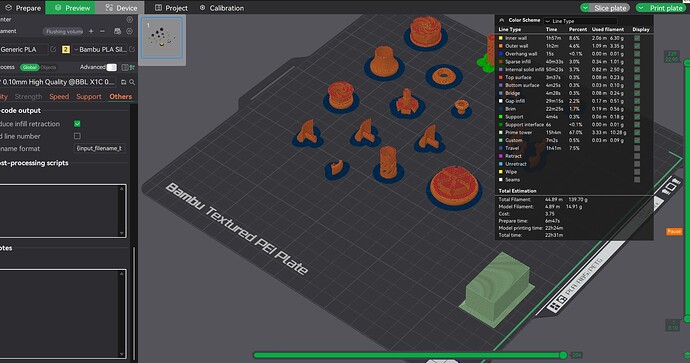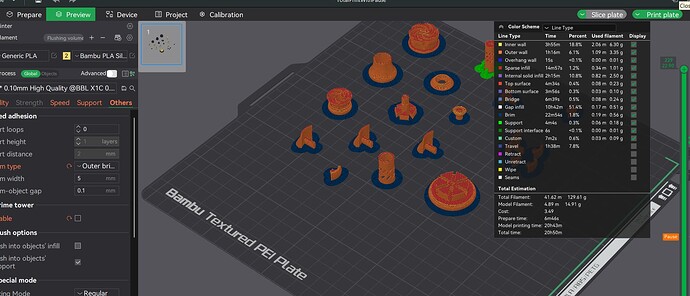In this screenshot, you can see that the model I am trying to slice says the prime tower will take 16 hours. When the prime tower is removed, apparently the gap infill now takes 10 hours??? This can’t be correct.
You’re not the first to suggest this. I’m afraid the topic of time estimates has been beaten to a pulp. Nobody has been able to define an algorithm that accurately forecasts the required time, so developers have apparently thrown up their hands and abandoned the effort altogether. This applies to all slicer programs—Prusa, Cura, etc. The same goes for filament weight, in case you’re curious. Nobody has been able to create an accurate algorithm for that either. I suspect the challenges are similar.
So even if your example is an extreme case, there’s no incentive for developers to waste time fixing a problem that doesn’t directly impact print quality or speed.
BTW: If your car has a “Miles to Empty” feature on the dashboard, you’ve probably noticed that it’s just an estimate—which is why automakers ditched the “last XX miles” readout long ago. Turns out they got tired of being sued by people who trusted the meter and ran out of gas. ![]()
@Olias, you are absolutely right about those inaccurate print time estimates.
Yet in the two screenshots that @BambuBanker shows, it doesn’t look like the estimate is generally off, but there happen really weird things. Printing with or without prime tower should have zero impact on the gap infill. Yet the time spent on it jumps from 30 minutes to 10 hours. That clearly looks like a bug to me.
That’s what I mean. The whole algorithm is a complete Charlie-Foxtrot. Whether it’s off by a few seconds or a few hours, I’ve found that it is only reliable when printing a single filament ±5%
Now i got it. Thanks for the clarification and I fully follow your thought.

